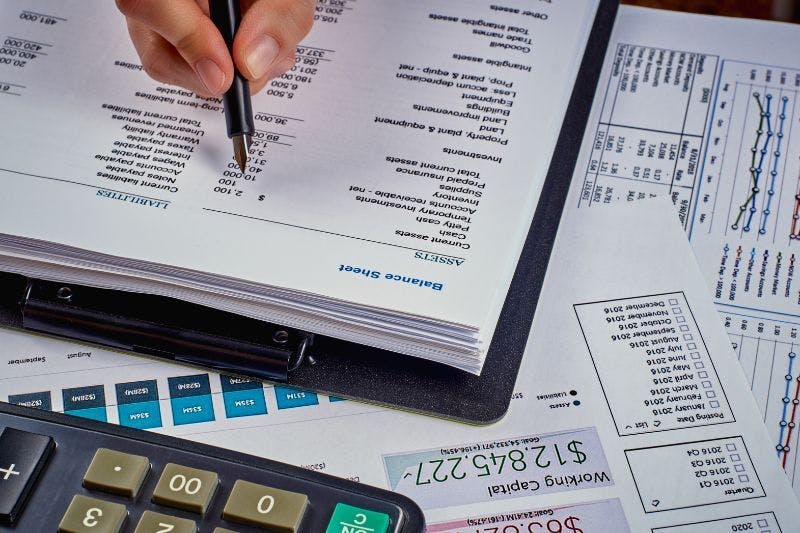
The Tax Cuts and Jobs Act (TCJA) of 2017 made significant changes to tax laws, including provisions that allowed more small businesses to adopt the cash basis accounting system. This amendment was a strategic move designed to simplify accounting, reduce administrative burdens and provide tax planning advantages for small businesses.[1]
This article examines the reasons why small businesses would make a switch to accrual basis to cash and how to record financial transactions when making a cash basis adjustment.

Benefits of a move to cash basis method
If your business makes less than $25million in annual sales for three consecutive years, you may be eligible to use the cash basis method.[1] Before you make the switch, let’s discuss the top three benefits of using the cash basis accounting method over accrual basis accounting.
Simpler accounting method
Cash basis accounting records transactions when cash is received or paid out. For companies with limited transactions the simplicity and directness of the cash basis accounting is appealing.
Cash basis tax return
Under the cash method, income is not taxed until it is received, and expenses are not deducted until they are paid. This can lead to potential tax deferrals of income recognition and an acceleration of expense recognition, potentially lowering taxable income in the short term.
It is also beneficial for tax planning, allowing small businesses to manage their cash flow and tax liabilities more efficiently. A 481 adjustment refers to a provision in the tax code that allows businesses to adjust their income and deductions when there is a change in accounting method [2]
Regulatory requirements do affect this decision and small businesses that want to convert to a cash basis method must file form 3115. For instance cash basis tax reporting purposes are limited by the IRS to smaller organizations that do not report any inventory at the end of the fiscal year.
Hall Accounting Company offers its small business clients tax planning and tax preparation services alongside bookkeeping services. As a trusted accounting partner, they understand what you want to achieve by moving to cash-basis accounting.
Book a consultation with an accountant.
Improved cash flow
When everything is dependent on cash sales and payments, you need to know what your cash flow looks like at all times. Good business decisions are based on knowing what actual cash you have in your bank account to use for business operations.
How to manage your chart of accounts

Image courtesy of Canva/Getty Images
An often neglected task of changing accounting methods is an accurate chart of accounts.
The primary shift in focus will be from tracking accounts receivables and payables to managing actual cash payments and for this you need the correct accounts.
Here are some examples of modified or new accounts you may need to set up.
Cash receipts account
This account tracks all incoming cash, including sales revenue, investment income and other cash inflows. It is essential for monitoring cash flowing into the business.
Cash disbursements account
This account records all payments made by the business, including expenses, debt payments, and purchases. It tracks all money going out of the business, ensuring it is only recognized when the payment is made.
Operating expenses account
A move to a cash basis may require more detailed categorization or separation of expenses to ensure accurate tracking of cash. For instance, separating fixed and variable expenses can help in better cash flow management.
Capital expenditure account
Capital purchases under accrual are capitalized and depreciated over time. However, under the cash method, they can be expensed in full at the time of the purchase. A detailed capital expenditure account is needed to track these significant cash outflows.
Owner’s draw account
This account is more relevant for sole proprietors and partnerships. It tracks the owners' withdrawal of cash for personal use, clearly separating personal and business expenses.
Tax payment account
Given the potential tax advantages of cash based accounting, setting up a dedicated account to track tax payments can help manage and optimize tax liabilities. This account would record all tax-related cash outflows, including estimated tax payments and tax refunds.
Petty cash account
Tracking the movements of all cash transactions is essential, no matter how small, and the petty cash account will allow you to do this.
The chart of accounts is the most important template you will set up because it establishes your accounting system. It organizes the general ledger accounts for recording transactions in your business and thus provides the foundation for your financial statements.
Should you hire a professional to do this for you?
This is definitely one of those tasks that an experienced bookkeeper or accountant can add great value to. They know what accounts are appropriate for each accounting method, type of business and industry. They’ve seen what works for the IRS and what doesn’t when it comes to your financial statements.
Since the chart of accounts (CoA) forms the foundation of all your financial transactions and, later, your financial statements, it is worth partnering with an accounting firm to get this sorted out. They can also advise you on how to do this if you are using accounting software and ensure the transactions appear accurately in the financial statements.
That’s a resounding YES from us!
Schedule a call with Hall Accounting Company - your small business accounting partner.
Key steps in the accrual to cash adjustment

Image courtesy of Canva/Elnur
When you’ve understood the reasons for making the change to the cash method, it is time for you to take the next step to create a bridge between accrual accounting and cash accounting.
Here is a breakdown of the critical first steps:
1. Adjusting entries
During this critical transition, it is important to maintain accurate adjustment records to comply with tax regulations and accounting standards such as GAAP.
If you are unsure how to make these entries or have complex transactions that could result in errors, consulting a professional accounting firm like Hall Accounting Company will be in your favor. They will help you set up additional accounts and make journal adjustments so that it accurately reflects your business’s finances.
Accrued expenses | Subtract accrued expenses that have not been paid or for which no supplier invoices exist from your financial statements, a straightforward yet critical adjustment. |
Accounts receivable | Write off or subtract accounts receivable balances if cash was not received within the accounting period |
Accounts payable | Exclude expenses for accounts payable that were not settled in cash during the period, ensuring a clear distinction in your financial records. |
Prepaid expenses | If some expenses have been prepaid, e.g., rent, record these transactions as actual expenses in the period when the cash was paid out. |
Unearned revenue | This revenue is recognized immediately upon receipt rather than being recorded as a liability until the service or product is delivered as in the accrual method. |
2. Shifting periods
Prior period sales | Shift prior period sales that were accrued at the end of the preceding period to the period when cash was actually received |
Customer and supplier prepayments | Realign transactions for customer prepayments to sales and supplier prepayments to expenses in the period when cash was exchanged. |
3. Financial Statements
There are vast differences in how financial information is reflected in the financial statements, depending on the accounting method you use. Therefore, these documents will need to be adjusted to reflect the correct financial standing of the business.
Balance sheet adjustments | Make fixed assets, depreciation and inventory adjustments, ensuring the balance sheet reflects accurate cash flow |
Income statement adjustments | Under the accrual method inventory is expensed as cost of goods sold when the inventory is sold. Under the cash method inventory purchases are expensed at the time of purchase, directly affecting the profit and loss statement. |
Fixed assets and depreciation | Under accrual accounting, the purchase of a fixed asset is capitalized, meaning it is recorded as an asset on the balance sheet and depreciated over its useful life. This depreciation expense is recognized annually, reflecting the asset’s consumption. In contrast, cash basis accounting requires the expense of the fixed asset purchase when the cash payment is made, with no allocation over its useful life. This can lead to significant variations in reported expenses and net income in the year of purchase. |
4. Implementation
Journal entries | Utilize journal entries to manually transfer activity from current accounts to corresponding transfer accounts, setting up new accounts for outstanding client deposits, unpaid invoices, and unpaid costs and expenses. |
Documentation | Keep records of all adjustments made on a spreadsheet as you will need to track errors and account for discrepancies should they occur. |
Simple practical example

Image courtesy of Canva/Industrial Photograph
Consider a small automobile repair business that wants to move to the cash method. Under the accrual method, the business recorded a sale of $10,000 in December 2023. However, the customer payment was not received until January 2024. Additionally, they ordered parts to the value of $5,700 in December but only paid in February 2024. Both the revenue and expenses were recorded in December using the accrual method.
Under the cash method, however, revenue would only be recorded in January when the customer payment was made, and expenses would be recorded in February when a payment was made to the supplier.
Concluding remarks
If you earn under $25 million in sales annually, have fewer financial transactions and do not have a large volume of inventory to record at the end of the fiscal year, cash-basis accounting may be exactly what you need.
The burden of recording transactions is simplified and the administrative burden is lifted, saving you time and money.
Your understanding of your cash flow will become better because you will deal with actual money in and out of the bank, and you can track expenses (even small ones, like petty cash) when they happen.
Don’t be afraid of the transition to a cash basis because you need to make adjustments. Using the basic information we have provided in this article will give you a good idea of whether you can manage this on your own or need an accounting professional to help you.
However, if you’ve already decided this transition is a job for the professionals, then schedule a call with us today to discuss how we can help you. We provide our small business clients with the following services:
Bookkeeping - make sure that your monthly bookkeeping is done and dusted without the worry of losing track of time or finances.
Tax planning and preparation - Navigating the tax landscape can be particularly daunting for small businesses, where every decision can have significant financial implications. We understand that tax preparation is just the tip of the iceberg. Our specialized tax planning services go beyond annual filings to provide a year-round, proactive strategy that aligns with your business goals.
CFO services - We take your goals and aspirations - even if you haven’t firmed them up, and translate them into a financial strategy that helps you to realize the business growth you want.
Go back to doing what you love while we take care of the numbers!
References: